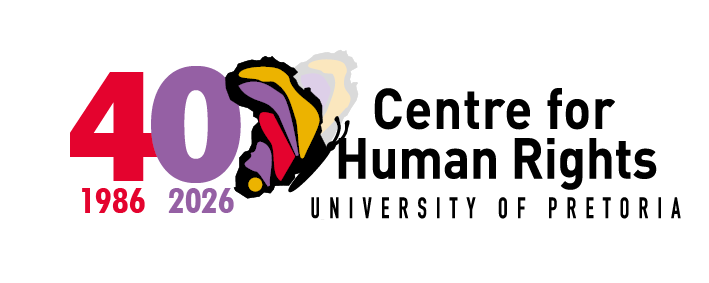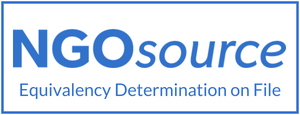 A. Nature and description of emergency COVID-19 measures taken by Kenya
A. Nature and description of emergency COVID-19 measures taken by Kenya
Kenya’s emergency measures were two-fold. There were mitigation measures prior to the first reported case of COVID-19 and since the first case, a series of directives by a variety of government ministries made for the emergency measures. Some of the directives were backed by legal notices and statutes (or amendments to statutes). The Ministry of Health was the focal state agency charged with the coordination of the emergency measures. This is because Section 35 and 36 of the Public Health Act Cap 242 obligate the Minister of Health to make rules to prevent threats of or in the event of a ‘formidable epidemic, endemic and infectious disease.’ Subsequently, on 27 March 2020, the health minister issued a legal notice, Public Health (Declaration of Formidable Disease) Order 2020. In addition, the World Health Organisation advisories informed the directives issued by the state and there was assistance from international organisations such as USAID, United States Centres for Disease and Control and Prevention, and Africa Centres for Disease Control and Prevention in implementing the measures
Mitigation measures
As early as 2 February 2020, the Ministry of Health (MoH) issued daily global updates on the spread of COVID-19 and directives on Kenya’s response to the virus. Surveillance and monitoring systems were deployed at all points of entry, health facilities and communities across the country, with a focus on persons with respiratory-related illnesses and those who had a recent travel history to China. There was also a consistent appeal to the public to maintain basic hand and food hygiene. On 13 February 2020, the MoH reported that 99,706 travellers had been screened nationwide, a combination of 400 public and private sector healthcare workers from health facilities and points of entry had been trained on dealing with suspected cases of COVID-19, some hotline numbers for reporting COVID-19 cases was established and the country’s isolation capacity, as well as in-country diagnostic capacity, was increased. On 19 February 2020, the MoH had procured 5,000 personal protective equipment with support from USAID. President Uhuru Kenyatta through Executive Order No. 2 of 2020 established the National Emergency Response Committee on Coronavirus, chaired by the Cabinet Secretary of the MoH, on 28 February 2020 charged with coordinating Kenya’s preparedness, prevention and response to the threat of the pandemic including conducting economic impact assessments and developing mitigation strategies regarding the pandemic. On 4 March 2020, the National Emergency Response Committee on Coronavirus launched the County Emergency Response Committees situated in all the 47 counties of Kenya chaired by the respective governors. These committees were instructed to draft budgets for setting up emergency response centres and to establish contingency funds for public health emergencies, constructing and equipping isolation centres in strategic locations. Further, the committees were advised to urge the residents of their counties to self-quarantine in the event of infection particularly if the infection occurs at places frequented by large numbers of people such as market areas, churches and matatus (public minibuses).
Meantime, the Council of Governors reported that they had rolled out programmes in vernacular radio stations to educate communities in their counties on COVID-19 preventive measures.
Measures subsequent to the first reported case
The MoH reported Kenya’s first COVID-19 case on 13 March 2020 coupled with some measures that would be effective for 30 days. For instance, temporary closure of prison visits, suspension of public gatherings, meetings, religious events and games, travel restrictions outside the country unless absolutely necessary, inter-school competitions were banned although schools were not closed, Kenyans were urged to desist from using social media to spread misinformation, fear and panic as well as advised to stay at home should they be feeling unwell with symptoms like coughing, sneezing and breathing difficulties. On 15 March 2020, President Kenyatta suspended travel for all persons entering the country from countries with reported COVID-19 cases, persons who had entered the country within 14 days were instructed to self-quarantine and should they have the symptoms, present themselves to the nearest health facility for testing. Other directives included: suspension of learning in all education facilities (18 March for schools and 20 March for tertiary institutions), government officers, businesses and companies were encouraged to allow their employees to work from home with the exception of essential service providers, and cashless transactions were encouraged to avoid the risk of physically handling money, thus, banks were requested to the lower the cost of transactions.
Pursuant to the Public Order Act Cap 56 and attendant legal notices, curfew orders (lockdown orders) that were amended from time to time were employed as additional emergency measures. Section 8 and 9 mandate the Cabinet Secretary for Interior, and Coordination of National Government, on the advice of the Inspector General of the National Police Service to direct curfew orders, were considered necessary for public order, while Section 9 provides the same obligation to police officers in a particular county or police division. On 27 March 2020, the Cabinet Secretary for Interior through a legal notice, Public Order (State Curfew Order) 2020, instructed a nationwide daily curfew applying from 7 pm to 5 am for a period of 30 days. Within this timespan, public gatherings, processions or movement was prohibited unless the person or group had written permission from a police officer in charge of a county or police division. Accordingly, police officers were mandated with the enforcement of the curfew orders. Further, the curfew order did not apply to some essential services, which were listed in the schedule of the curfew order. The Law Society of Kenya successfully petitioned the High Court to declare police use of force in enforcing this curfew order unconstitutional because it arbitrarily limited freedom of assembly, association and movement. The operability of the curfew order was nonetheless upheld, therefore, the Ministry of Defence has continuously amended the state curfew orders over time. For instance, the Public Order (State Curfew) Variation Order 2020 issued on 30 March 2020, instructed employers to release their (non-essential service) workers at 16:00. On 17 April, through Public Order (State Curfew) Variation Order 2020, Kenya Ferry Services employees handling cargo were enlisted as essential services.
By virtue of the Public Health Act, the MoH also issued curfew orders. Through Public Health (Prevention, Control and Suppression of Covid-19) Rules, 2020, landlords, employers, owners of businesses premises were obligated to notify the MoH on suspected COVID-19 cases; furnished medical officers/public health officers with the power to quarantine persons, search and inspect premises, and direct the use of a premise suspected to be contaminated including evacuations and restricting entry. The rules also created the offence of escaping a quarantine centre that attracted a fine of up to Ksh 20,000 or an imprisonment sentence of up to two months. Further, the MoH could declare regions as infected areas.
On 6 April 2020, through the Public Health (Covid-19 Restriction of Movement of Persons and Related Measures) Rules, 2020 the MoH could restrict movement in a restricted area unless the movement involved the transportation of food, construction material, fuel and pharmaceutical products or ambulances transporting patients to health facilities within an infected area. Consequently, the MoH instructed a cessation of all movement in and out of Nairobi Metropolitan Area through Public Health (COVID- 19 Restriction of Movement of Persons and Related Measures) (Nairobi Metropolitan Area) Order, 2020 for a period of 21 days. On 8 April 2020, a similar containment measure was mandated in Kwale County through Public Health (COVID-19 Restriction of Movement of Persons and Related Measures) (Kwale County) Order, 2020; Mombasa County through Public Health (COVID-19 Restriction of Movement of Persons and Related Measures)(Mombasa County) Order, 2020; and Kilifi County through Public Health (COVID-19 Citation. Restriction of Movement of Persons and Related Measures) (Kilifi County) Order, 2020.
At the county level, on 1 April 2020, the Council of Governors reported that they had received support from the National Government to recruit 6,656 health workers for COVID-19 emergencies only. Further, as of 20 March 2020, Kenya Medical Supplies Authority had distributed 694 surgical masks, 32,000 face masks, 910 medical disposal overalls, 735 face shields, 610 goggles, 796 boxes (with 50 pairs each) of examination gloves, 140 pairs of gumboots, 2,000 N95 masks.


